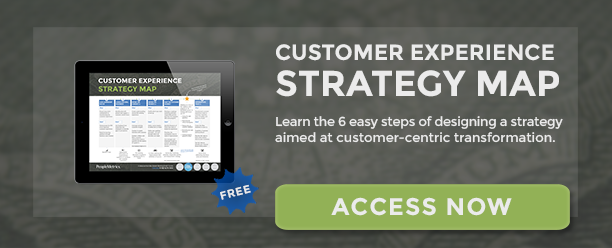Customer-centric businesses put customers at the core of the business, then make policy and process design decisions centered on the needs of those customers. That customer focus compels naysayers to label customer centricity as an ill-advised business strategy.
What happens, those naysayers ask, when your heart pushes you to take action that interferes with a long and prosperous future?
For example, let’s say you need to raise fees, but your customers disagree. Or you have policies in place to secure and protect your institution’s assets, but those policies feel unfriendly to your customers. How can making a decision that is best for customers also be a smart strategy for your business?

The answer lies in the economics of customer centricity. According to Peter Fader, Professor of Marketing at Wharton:
“A requirement behind customer centricity is the ability to understand customers at a fairly granular level and to be able to identify the customers or the segments of customers who are valuable from the ones who aren’t. If you can’t sort out your customers—if you can’t look at them and know who is good and who is bad—then you can’t be customer-centric.”
Customer-centric business starts with knowing who your best customers are right now, and more importantly, in the future. These customers, when given an experience that works for them, will become loyal advocates for your company. They'll return to you for all of their financial needs, and they'll recommend you to people like them.
Over the course of their lifetime with your institution, those customers will bring tremendous value. The deeper your understanding of their needs, the more you can create an engaging experience. And over time, the more successful your company will become.

Customer-centric companies do not try to be all things to all customers. Instead, customer centric build a common understanding of who their best customers are and what the ideal customer experience is for them.
At the start of your journey toward customer centricity, spend time identifying your best customers. To develop a deeper customer understanding of your customers, try using this three-step process:
1. Group your existing customers into distinct segments.
You should start learning about your current customers by using data you already have. The following table provides examples of differences to look for and questions to ask as you interrogate the data:
| Customer Differences | Key Questions |
| Demographic Differences |
|
| CompanyF Relationship Differences |
|
|
Behavioral |
|
| Customer Value and Profitability |
|
2. Turn customer segments into customer personas.
Once you have a clear picture of the different and distinct groups of customers that your company serves, make those segments real through persona work. Personas are fictitious characters that represent segments—with details like names, gender, family status, job situation, income, housing, attitudes, aspirations, and values.
Creating target personas would require its own eCourse, but it's a crucial step to developing customer understanding. Once you have personas created, you should present them to a selection of your staff to gauge their reactions and validate them. (Which just so happens to be the subject of the article below this one.)
3. Define your customers’ Wows and Woes (by segment).
Now that you know the different types of customers that you have, it’s time to understand their attitudes, motivations, and perceptions of your companies experience. By overlaying survey results onto the other information you have from your segmentation analysis, you will be able to flesh out your profiles and get a deeper understanding of what they need from you and how they are experiencing your company today.
Keep Moving Forward
Using the insights gleaned from your customer understanding work, you can move on to clarifying the experience you intend to deliver to your target customer segments and defining your Customer Experience Guiding Principles. These principles will be the foundation of your bank’s disciplined decision-making – another growth discipline – in the future.
Customer experience strategy can be a complex arena. But if you're interested in an overview of the steps to improve your customer experience, then check out our strategy map:





%20(1).png)